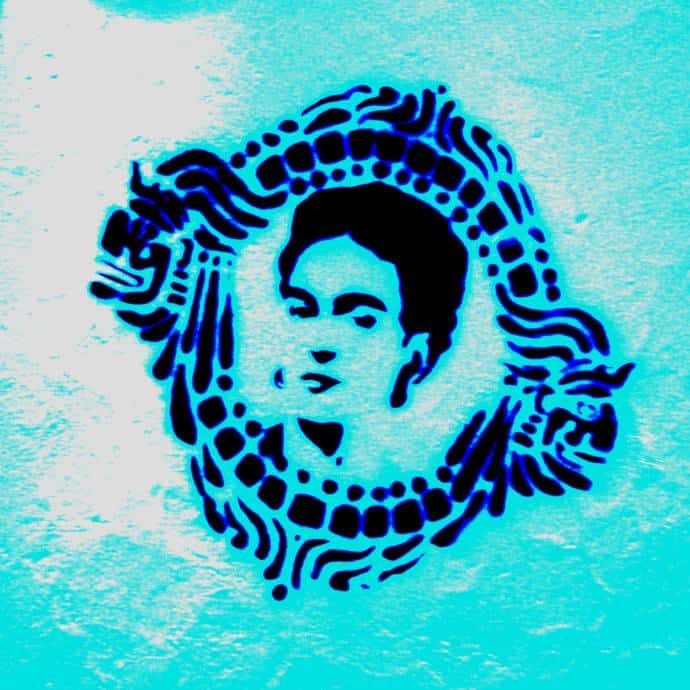Underlying the domain of human rights is the conception of the human on which we predicate, and advocate for, human rights’ recognition. But what are we actually lobbying for and to whose advantage? Powerful black feminist theories, among others, have drawn attention to the problem that comes with the narrative of inclusion and integration, namely that it reinforces the very system that performs the exclusion in the first place. So would it not be time to revise the extant definition of the human?
What does it mean to be human, and what impact does the current definition of being human have on those defined, as well as those not defined, as such?
Are there degrees of humanity implied in the definition? If so, how are the degrees present? These are the questions that shape the agenda of Weheliye’s new publication.

And we become ourselves the more we take control of who we can be, freed from the constraining pre-defined identity options we are granted as we develop into social beings.
In order to restore this freedom, Habeas Viscus revives the notion of “flesh”, as conceptualized by Spillers. As such, “viscus”/ “flesh” stands for the human body validated in all its forms and variations. Subscribing to this definition means going beyond culturally racialised layers until we reach the elementary unit from which we are to build on a new definition of the human that would render justice to the whole ontological being involved (p. 137). Other attempts to locate the ultimate epistemic unit that would account for all humans, with no inherent exclusion performed at the level of definition, have failed because they did not include race as an essential feature in the process. In the spirit of Spillers, Weheliye makes a strong case when showing how Agamben’s Muselman, the last functional stage to which Nazi concentration camp detainees could be pushed, cannot fulfil this role as it fails to explain the different extant degrees of exclusion and violence and the different degrees to which they gain legitimacy. In other words, whereas black feminism, for instance, has been structurally relegated to the ethnographic and local, the Holocaust has been deemed relevant to everyone (p. 7).
What better proof is there of the primary role of race in performing exclusion before the intrusion of other forms of discrimination such as violence in a suspended state of exception than the violence which is banned during a state of normalcy and that suddenly becomes legitimate in an ‘exceptional’ situation, like the concentration camp?
In other words, the fact that a state of exception is declared cannot account for all the violence performed in such a situation: the violence is already at work through the dormant but already extant rules that are merely promptly activated. The potentiality of violence per se signals the existence of violence. Analogically, the concentration camp and other forms of state of exception and of suspending violence are just externalizing the violence that a society does not (fully) admit to itself. The notion of flesh is meant to account for the violence performed at the epistemic level towards each others’ bodies; it points at the filters through which we get to know the suffering bodies.

Photo by Carol Schaffer (flickr, CC BY 2.0)
To render such filters visible, Wehelyie invites us to see the accounts of flesh at which we are educated to turn our backs in disapproval. Cinematic aesthetic, for instance, has limited suffering black bodies screaming and moving in a deculturized way, thereby evacuating them to a zone where they are being denied the right to a meaningful existence. This is where the question of language intertwines with pornotroping mechanisms, bringing us to the argument pushing for an approach from the vantage point of black studies. The book spotlights examples of images taken from the cinematic world which depict black bodies. It offers us, as announced in the title, flesh in its crudest form, the kind of flesh to which we refuse to assign the full status of humanity. This is what pornotroping actually stands for, namely, “the enactment of black suffering for a shocked and titillated audience”. It is based on a historical coding mechanism in whose design black subjects have not been invited to participate and whereby their bodies have been “marked with significations […] they cannot choose” (Ulysse 2015). It is from the vantage point of this marked flesh, black bodies perceived as below white ones, that Habeas Viscus recreates the conditions of possibility for the voices that inhabit the flesh to be heard. The sounds created by the bodies, until now not worthy of significance, claim their significance. We are attuned suddenly to all kinds of flesh, beyond both race and gender. The sonic reference is also a legitimate hint about Weheliye’s work on black music culture.

Photo by Ted Van Pelt (flickr, CC BY 2.0)
There is also valuable advice in Habeas Viscus for anthropology as a discipline in itself: epistemologically at stake is how it portrays and what it chooses to portray in its ethnographies. The way black bodies have been depicted as external to the hegemonic version of Man (Wynter 1989), is mirrored in the way anthropology has overrepresented the exotic. As Wynter put it, “relativization has not occurred at the level of our human sciences”, despite having taken place in the ‘natural sciences’ (Wynter 1989: p. 645). A practical move in the sense that black studies envision decolonizing the imagery of further non-white bodies is, for instance, Faye Harrison’s and Jennifer Esperanza’s critique through images meant to rebrand anthropology books. The visual permutation is crucial in revealing and dismantling the western racialising gaze.
Habeas Viscus lays down the theoretical framework necessary for the visual enactment of this critical gaze.
One of the strengths of this book lies in the fact that it shows the deep correlation between the ‘revolutionary’ western philosophies meant to draw attention to suffering, violence and exclusion on the one hand, and the ongoing discrimination against black (female) bodies, on the other. It reveals and disrupts the underlying exclusionary logic, and its subtle workings, that disempowers certain bodies or denies them access to humanity, and offers them an after the fact chance to reclaim their personhood, where personhood is understood as property. What is at stake in disenchanting theories like Foucault’s or Agamben’s is rendering visible the workings of the definition of human beyond the precincts of law.
While it unpacks the critique of Spillers and Wynter of the “human”, and by moving from one concept to another, leads the reader through a visual journey into the modalities of the flesh, the book retains a smooth flow in presenting its arguments.
It successfully delivers what it suggests right up to the end: moving a step closer to a just and encompassing definition of the human.
The last chapter announces forms of freedom that become possible as a result of the new conceptualization of the human. Ultimately, it draws on Benjamin’s understanding of historical materialism (Benjamin 2003) which opens up the space for emergent and future forms of humanity, avoiding closure and reification of any definition along the way. Further issues could be raised after all the hierarchies among human bodies have been challenged and overcame. One question could inquiry into what other forms of blocking belonging of all humans will be rendered visible after the abolition of race (and gender)? And what tools will we need to develop to unveil such forms by theorizing them or involving them in a revolutionizing visual permutation? Finally, what will be the future challenges for human rights once we have abolished racialisation?
References:
Benjamin, Walter. On the Concept of History [1940], in Selected Writings, vol. 4: 1938-1940. Cambridge, MA: Harvard University Press, 2003.
Spillers, Hortense. Mama’s Baby, Papa’s Maybe: An American Grammar Book [1987], in Black, White, and in Color: Essays on American Literature and Culture, 203-29. Chicago: University of Chicago Press, 2003.
Ulysse, Gina Athena. Pedagogies of Belonging, 2015.
Wynter, Sylvia. Beyond the World of Man: Glissant and the New Discourse of the Antilles, 1989, in World Literature Today 63.4: 637-48.
Weheliye, Alexander G. 2014. Habeas Viscus: Racializing Assemblages, Biopolitics, and Black Feminist Theories of the Human. Durham: Duke University Press. 224 pp. Pb: $23.95. ISBN: 9780822357018.
**********
Featured image (cropped) by Brianna O’Connor (flickr, CC BY-NC-ND 2.0)







